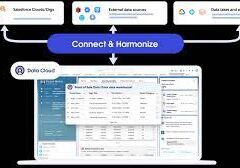Salesforce serves over 150,000 customers across diverse industries, providing a Customer Relationship Management (CRM) platform and Salesforce Customer 360 that are instrumental in ensuring efficient business operations globally. Developers leveraging Salesforce technologies play a crucial role in solving intricate problems for customers, employing both code and Salesforce’s no-code tools.
This context refers to all developers engaged with Salesforce technologies to craft solutions for customers and partners. While Salesforce has its team of developers dedicated to building products (for more details, check out our engineering blog), the insights shared here are relevant to anyone working within the Salesforce ecosystem.
What is the role of Salesforce Developer?
A Salesforce developer is a special type of computer programmer who writes software on the Salesforce CRM platform or another piece of Salesforce cloud technology. This ranges from creating websites to developing apps. A Salesforce developer works with computer code like JavaScript and HTML on a daily basis.
In the realm of Salesforce, developers have the flexibility to create solutions using a combination of no-code tools and code, a methodology known as low-code development. Utilizing no-code customizations enables developers to address certain requirements without resorting to coding, resulting in reduced repetition and boilerplate code when coding is necessary.
Salesforce offers a comprehensive range of products spanning sales, service, marketing, analytics, commerce, and more, with each component exposing APIs. Developers leverage these APIs to develop web apps on Heroku, enhance integration through MuleSoft, or customize standard applications. In essence, any developer has the potential to be a Salesforce Developer within this versatile and expansive ecosystem.
What tasks does a developer undertake with Salesforce?
Developers working with Salesforce technologies are primarily engaged in constructing customized business applications and solutions. They achieve this using either the Salesforce Platform, which encompasses Sales Cloud, Service Cloud, and Experience Cloud communities, or by utilizing Heroku. While certain developers specialize in specific areas, the majority can be classified as full-stack developers, adept at handling both back-end logic and front-end experiences.
In addition to the Salesforce Platform, developers find diverse opportunities within the Salesforce ecosystem. Some focus on creating tailor-made marketing experiences using Marketing Cloud, while others delve into data analysis and unveil new insights through Tableau. There are developers dedicated to constructing captivating commerce experiences using Commerce Cloud’s PWA kit, and others who contribute to shaping their company’s digital headquarters by developing custom Slack apps.
Every developer relies on code as their fundamental toolkit, prompting the question of which programming languages are prevalent in the Salesforce realm. The choice often hinges on the specific domain within the Salesforce ecosystem that one opts to engage with.
Languages
JavaScript and Apex stand out as the two primary languages in the Salesforce world. JavaScript is employed for front-end customizations, particularly in Lightning Web Components, while Apex is the predominant back-end language in the Salesforce ecosystem.
The Salesforce Platform incorporates two domain-specific query languages. Salesforce Object Query Language (SOQL) mirrors SQL and serves as a query language for accessing data in the Salesforce multi-tenant database. On the other hand, Salesforce Object Search Language (SOSL) is a text-based search language designed to locate both data and documents stored on the platform.
Certain Salesforce products support additional languages. Python and JavaScript are both supported by the Slack Bolt SDK. For customized marketing experiences in Marketing Cloud, AMPscript is a viable option. Integrations with MuleSoft involve writing data transformations in DataWeave. Working with dashboards in Salesforce CRM Analytics may involve using the Salesforce Analytics Query Language (SAQL) for refining visualizations. The recent addition of Data Cloud allows access to its data using SQL.
The technology and language landscape within the Salesforce domain is diverse and extensive. Regardless of one’s interests, there is a niche to specialize in.
No-Code Tools
Given Salesforce’s provision of no-code customizations, every developer operating within the Salesforce ecosystem inevitably learns to leverage no-code tools supporting their work. Features that might be intricate to implement, such as wizards, data security rules, and basic user interface (UI) customizations, can be accomplished without any coding.
While developers with prior enterprise software experience often find a seamless transition to Salesforce, this is not a prerequisite. Any developer, including those entering directly from college or transitioning from other software engineering backgrounds, can become a Salesforce Developer.
If you need Salesforce developer help, contact Tectonic today.













